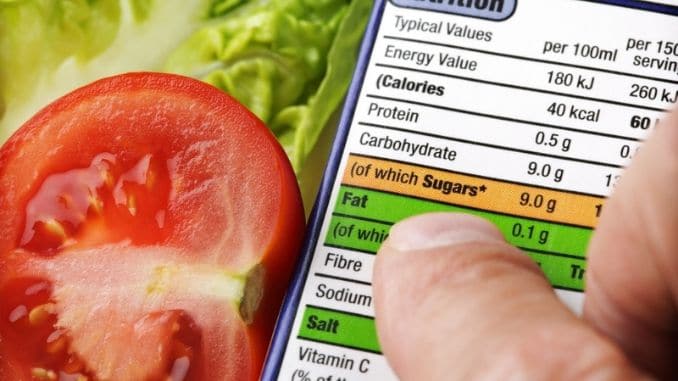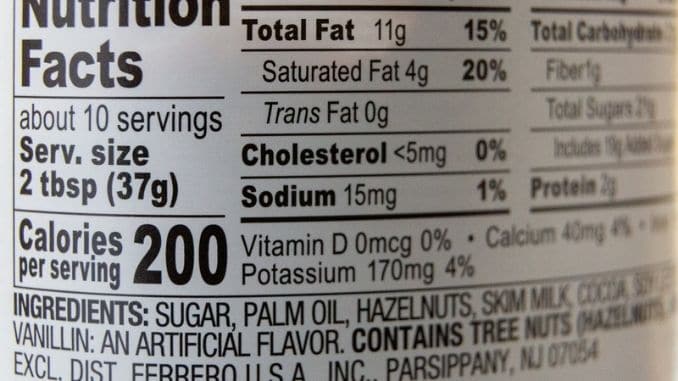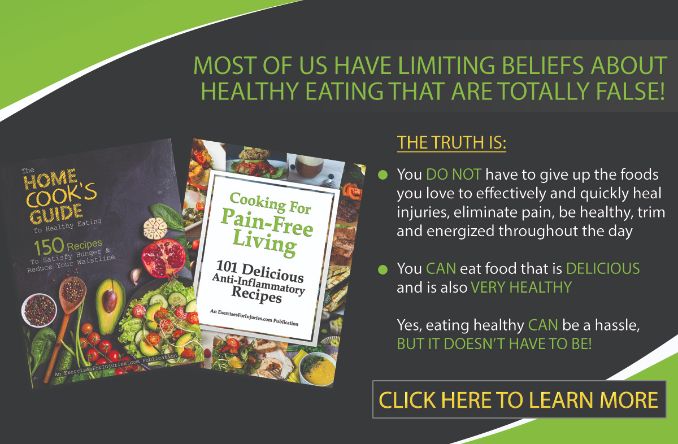In 2016, the U.S. Food and Drug Administration (FDA) updated the Nutritional Facts label on packaged foods and drinks. This was the first major update to the label in over 20 years and was inspired by health organizations and consumer groups that wanted to make it easier for people to make informed food choices.
Most manufacturers were given until last year (2020) to update their labels to reflect the changes, while smaller food companies were given until January 1, 2021. Today, almost all food products have the updated labels, except perhaps for a few honey and maple syrup products, which have until July 1, 2021.
In this article, we take you through the new nutrition labels step-by-step so you know what to look for to make your smartest choices.
Highlights of the Updated Food Nutrition Labels
First, let's look at some of the major changes that were made.
1. Refreshed Design
When you turn your product over and view the nutrition label, you may find that it still looks about the same. It's still a rectangular shape with a black border and contains certain bolded items. The new design, though, does have some important updates that make it easier for you to find the information you need.
The following terms, for instance, have been increased in size on the label:
- Calories
- Servings per container
- Serving size
The number of calories and the actual serving size have also been bolded to highlight this information.
Some of the items on the label have also been changed. Manufacturers must declare the actual amount, for instance—in addition to the Daily Value—of vitamin D, calcium, iron, and potassium. They may include amounts of other vitamins and minerals at their discretion.
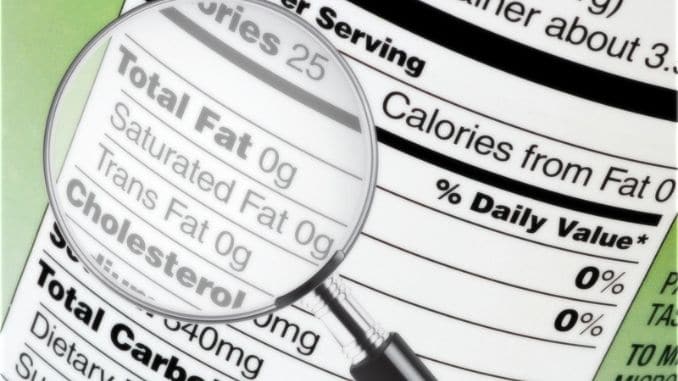
2. Reflects Updated Information About Nutrients
The new nutrition label has been changed to reflect what recent scientific studies have discovered about how diet affects health.
- Added sugars: The old nutrition label was confusing, as it contained only the total sugar level. Natural sugars, however—such as those in fruits—are not as damaging to health as “added” sugars, which the manufacturers put in during processing. Now, the label distinguishes between these two types of sugars.
- Nutrients: Scientists have found that most people get enough vitamin A and C, so these nutrients are no longer required to be listed on the label. Instead, vitamin D and potassium are required, as studies have shown that many people may be low in these. Calcium and iron were required before, and are still required.
- Fats: The listing for “Calories from fat” was removed, as scientists have discovered that it's not how much fat we eat that affects health as much as what kind of fat we eat. You will still see listings for “total fat,” “saturated fat,” and “trans fat.”
- Daily values: The daily values for nutrients like sodium, dietary fiber, and vitamin D have been updated based on newer scientific evidence.
3. Updated Serving Sizes
The serving sizes have always been listed on the nutrition label, but now, these sizes must be based on amounts that people tend to actually eat, not what they should eat.
How much people eat and drink has changed over the past few decades. In general, we’re eating more than we used to. Whereas before a serving size of soda pop may have been 8 ounces, today it’s more likely to be 12 ounces. The new label reflects these increases.
Now, food manufacturers can no longer get away with saying that a soda pop contains only 100 calories because they're basing that on the old 8-oz serving. Now they must include the calories for the 12-oz serving, giving customers a more realistic view of how much they're consuming.
Larger packages must also reflect what people are likely to eat. A large 20-ounce soda, for instance, must now be labeled as one serving (rather than two) because people usually drink it all.
For some packages, though, the FDA is still allowing food manufacturers to split them up. In these cases, they can provide “dual column” labels that indicate the number of calories and nutrients on both a “per serving” and “per-package” basis. A bag of microwave popcorn, for example, may list 30 calories per serving and 140 per bag, letting consumers know how many calories they're getting, depending on how much they eat.
10 Tips for Reading the New Nutrition Labels
Now that you know the basics, let’s look at ten ways you can read these new labels to make sure you’re making the best choices for your health.
1. Look at the nutrition label first.
In general, manufacturers have a lot of latitude on what they can put on the front label. The package may boast “low-sugar,” for example, when there are still significant levels of added sugars in the product.
You’re best to ignore the front label and turn the product over immediately to get the real story.
2. Start with the serving size.
As noted above, the new label makes the serving size clearer than it was before. This has changed, so where you may have thought you were getting only 100 calories per serving before, now you may learn that you were actually getting more.
Compare the amount you usually eat or drink with the serving size listed on the label, and make your choice from there. Keep in mind that the serving size is not a recommendation. In other words, just because one serving is four cookies doesn’t mean you should eat all four cookies. You may want to eat only two and save the calories and sugar.
3. Check the calories next.
How many calories will you consume in one serving? That’s important to know for a few reasons. First, if you discover that a serving contains more calories than you thought, it may encourage you to choose another item.
Second, your overall number of calories consumed per day affects your weight over time, so you’ll want to make sure you’re not over-indulging with a bag of potato chips, for example, or eating an entire instant lasagna dinner that totals over 1,000 calories.
As a general guideline, anything with 40 calories or less per serving is considered low-calorie.
4. Look for low numbers for two items.
There are two items listed on the nutrition label that should have low numbers:
- Sodium: High-sodium diets have been linked with high blood pressure and heart disease in some studies. Other studies have shown mixed results, and we now know that some people are more sensitive to sodium than others. If you have heart disease, however, it’s best to cut back on sodium. The American Heart Association recommends limiting it to no more than 2,300 mg per day.
- Added Sugar: Americans generally consume too much sugar, and it has been linked to overweight and heart disease. Look for items that have either zero or very few added sugars. Natural sugars are considered healthier than added sugars, but it’s still possible to consume too much—such as in 100 percent juice.
5. Examine the saturated fat.
It used to be that we thought all fat was bad for you and would lead to clogged arteries. Scientists now know that some types of fats are good for you, so review this number with caution.
Nuts, for instance, are likely to be higher in saturated fat than some other items, but those fats have been found to help prevent disease. Brownies, on the other hand, are likely to have unhealthy saturated fat from oils.
6. Does the item have fiber?
Dietary fiber is critical to good health, and most Americans don’t get enough. Eating a diet high in fiber can help promote healthy digestion, lower blood sugar, and cholesterol levels, and reduce calorie intake. The general recommendation is for women to eat 21-25 grams of fiber per day, and men to eat 30-38 grams per day.
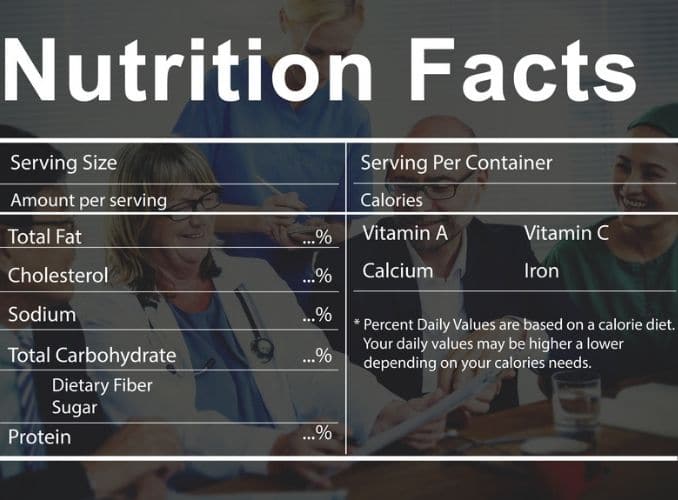
7. Review the Vitamin D, calcium, iron, and potassium.
Scientists have found that people who get enough of these four nutrients tend to have a lower risk of osteoporosis, anemia, and high blood pressure. You don’t need excessive amounts, but if you see moderate amounts of these nutrients, that’s a good thing.
8. What do the daily values tell you?
The percent Daily Value (%DV) is the percentage of the recommended daily value for each nutrient in one serving of the food. Reviewing these can help you determine if the food is high or low in a nutrient.
This number on the label helps you interpret the nutrient numbers (grams, milligrams, micrograms) by putting them all on the same scale. Use the following as a general guide:
- 5 percent or less of a nutrient per serving is considered low.
- 20 percent or more is considered high.
- Look for foods higher in fiber and nutrients
- Look for foods lower in sodium and sugar
9. What about protein, cholesterol, and carbohydrates?
These are also listed on nutrition labels. What should you look for?
Protein
Items with protein help keep you full while giving your body the nutrients it needs to build new cells and tissues. The higher the protein, the more satisfying the food in terms of fullness.
Carbohydrates
Foods with carbohydrates give your body the energy it needs to go about the day. Not all carbohydrates are equal, though. Simple carbohydrates—like those found in refined-grain bread and cookies—break down quickly in the body and can spike blood sugar levels. Complex carbohydrates—like those found in whole-grain foods, are healthier.
Unfortunately, the label doesn’t distinguish between these two types of carbohydrates. Simple carbohydrates, though, are often connected to sugar, so if you see high carbs and high sugar, the food is probably best avoided or limited. High carbs with high fiber is a good sign.
Cholesterol
We used to think that dietary cholesterol raised blood cholesterol levels, but recent studies haven’t born that out. Still, the American Heart Association recommends that you limit your daily intake to no more than 300 grams.
Check the saturated fat numbers at the same time—recent research shows that it has a much bigger impact on raising cholesterol levels than dietary cholesterol.
10. Study the ingredients list.
What is actually in this food that you’re buying? The only way to tell is to shift your gaze away from the nutrition facts and review the ingredients list. Product ingredients are listed by quantity, from the highest to the lowest amount, so those items that you see listed first are the ones making up the bulk of the food. They should be real foods that you recognize, not chemicals or sugars.
If you see refined grains, hydrogenated oils, or sugars in the first three ingredients, you can assume that the product is probably not good for you and should be consumed sparingly, if at all.

Remember that nutrition labels are provided for a reason – to help you make better nutritional choices. Taking the time to read these labels and better understand what the details listed truly mean is an important part of healthy shopping.
Now that you know how to confidently shop, learn the best recipes for healthy eating. Click here for more information.

